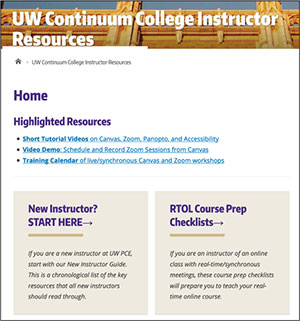Learning Environment and Course Modality
![Grid showing Course modality [Completely Synchronous (CS), Partially asynchronous (PA), Completely asynchronous (CA), Student's choice (SC), Total (T)] for each Course environment. Completely face-to-face: CS 7%, PA n/a, CA n/a, SC n/a, T 7%. Hybrid: CS 9%, PA 11%, CA 1%, SC 5%, T 27%. Completely online: CS 18%, PA 14%, CA 19%, SC 4%, T 56%. Student's choice: CS 2%, PA 2%, CA <1%, SC 5%, T 9%. Total: CS 37%, PA 27%, CA 21%, SC 14%.](https://www.educause.edu/-/media/images/educause/ecar/2021/student-experiences-learning-with-technology/etrac_online_learning_figure1.png)
Pandemic learning happens everywhere and whenever. While the choices students had for the type of learning environments and modalities were dependent on their institutions' approaches to pandemic course delivery, almost every combination we tracked was deemed a good learning experience by at least some students (figure 1). Learning environment appears to have played a smaller role in students' evaluations than did course modality. For example, students enrolled full-time were more likely to say that they learned the most in online courses taught synchronously, perhaps because synchronous learning provided a schedule to manage the large number of courses in which they were enrolled or created an experience that more closely matched the face-to-face experiences to which they were accustomed. As we have seen before, married students, students who live off-campus, and students who are working full-time were more likely to say they learned the most in online asynchronous courses, a preference tied to the need to juggle a complex array of work and family responsibilities and to their recent learning environment experiences. While fewer students reported learning the most in courses where they had the choice of learning environment and/or course modality (HyFlex), this could be more of a reflection on the availability of choice than the courses themselves.
Peers You Can Connect With

A Model of Effective Self-Service Instructor Training
University of Washington
For a number of years, the University of Washington Continuum College has been using SynchDL, a version of HyFlex course design in which instructors teach face-to-face and online simultaneously. Regardless of their levels of preparation and skill, instructors teaching SynchDL courses received significantly lower ratings of instructional effectiveness from students. In response, UW developed the Real Time Online (RTOL) Course Prep online course to provide instructors with guidance for setting up and delivering their courses. Faculty who partnered with instructional designers and used the RTOL model received better course ratings than those using the older models and had greater levels of student satisfaction during the emergency move to remote teaching during the pandemic.